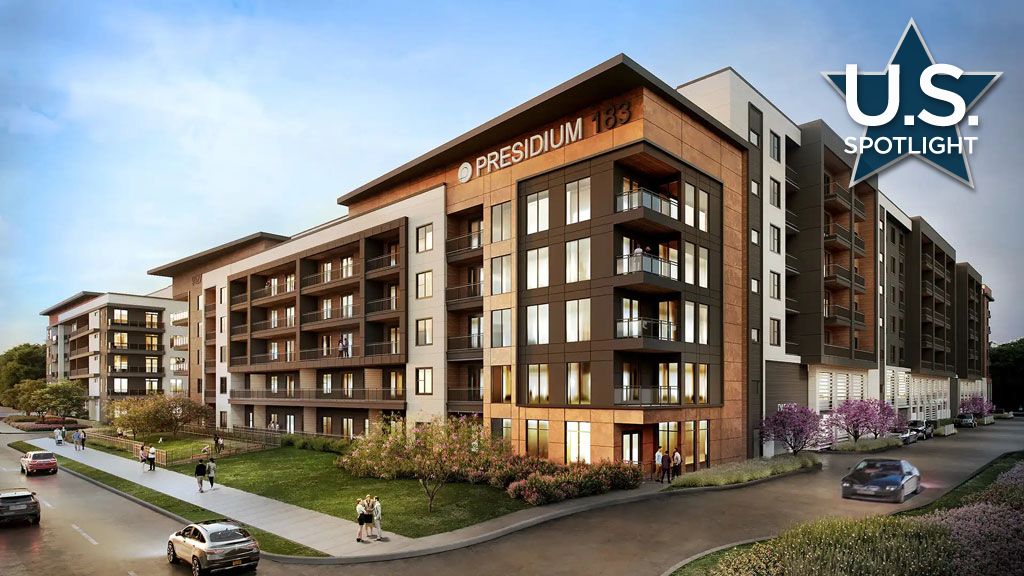The continued population growth in Texas is being met, at least in part, by the ongoing construction of rental housing.
The numbers are impressive. Texas continues to lead the country in terms of housing delivery, with Dallas-Fort Worth (DFW) clearly in first place. About 40,000 units entered the DFW market last year, with nearly 10,000 of those leased in the second quarter of 2024 alone. Another 32,000 units are expected to be delivered by year’s end.
“Strong demand and steady job growth are driving a steady flow of renters to Dallas. As a result, developers have built more homes in this market over the past decade than any other market in the country,” RealPage Market Analytics said in a recent market update.
The DFW housing market ranks fifth in the nation, with over 696,000 units available in Q1 2024, according to data from RealPage, behind only New York, Los Angeles, Houston and Chicago. No other urban center in the country has experienced faster growth in housing availability. Over 180,000 units have been added to DFW’s inventory in the past 10 years.
That’s the good news.
In contrast, rental occupancy in the DFW area is currently at 89.3 percent and is expected to drop to 88.5 percent by the end of this year, according to MD Real Estate. This has caused rents to drop by as much as 8.0 percent depending on apartment size. This is in contrast to many other parts of the country, where rents are rising and eating up ever larger portions of family income.
Austin, the only other U.S. market that matches DFW’s levels of rental growth, is in a similar situation, according to RealPage.
With inventory already at 300,000 units, housing construction is increasing in Austin, creating an oversupply that is expected to persist throughout the year. In fact, occupancy fell to 89 percent toward the end of 2023. The lower occupancy resulted in an average quarterly rent decline of 3.0 percent in Q3 2023.
Despite the supply-demand mismatch in Austin, developers don’t seem discouraged. New projects continue to be announced.
The recently approved rezoning allows Leifer Properties to build 1,300 new homes on a former industrial site that is being transformed into a new 11-acre multi-use development in South Austin, with five percent of it designated as “affordable housing” for people earning between 40 and 80 percent of the area’s median family income.
Pending rezoning approval, an additional 600 apartments could be built on a 10-acre site in The Domain neighborhood in north Austin, often referred to as the city’s second downtown.
New York-based developer Turnbridge Equities LLC has been linked to multi-use and luxury projects in the greater Austin area for some time. It is seeking further development of its site near Q2 Stadium in North Austin, home of Austin FC, the city’s first professional sports team. Turnbridge’s mixed-use plan for the 13-acre project could include up to 825 apartments in several new buildings of up to 45 stories. It is not known whether some apartments will be offered as affordable units.
Also in North Austin is Presidium 183, which began construction last summer. Combined with the adjacent Waterford Presidium, which is already open for leasing, a total of 660 new apartments will come to market. More than 10 percent of these will be affordable to people making 60 percent of the area’s median family income.
This construction activity is likely to continue the trend of high vacancy rates and falling rents for owners, but at the same time makes Texas an attractive destination for immigrants who live in rented accommodation.
According to online apartment search website RentCafe, three Texas cities are in the national top 10 “best places to live for renters in 2024.”
When it comes to value for money, Texas is a winner, especially outside of its major centers. In McAllen, south of Corpus Christi, renters can rent an average of about 1,400 square feet for $1,423 per month.
Although a monthly budget of $1,500 in Houston only gets you 1,000 square feet, about the size of a two-bedroom apartment, that’s still nearly 20 percent more than the national average for the same monthly rent, according to RentCafe.
“Houston has the most spacious housing of any major city in Texas,” it says, “even outshining major cities like Chicago, Los Angeles and Washington DC. Moreover, its housing size has increased compared to ten years ago.”
However, the newest units currently being built are getting smaller on average, measuring only about 84 square meters.
The apparent optimism about future demand for rental housing in Texas may be at odds with the current somewhat stagnant market for landlords, but success in real estate has always been about taking a longer-term view.

